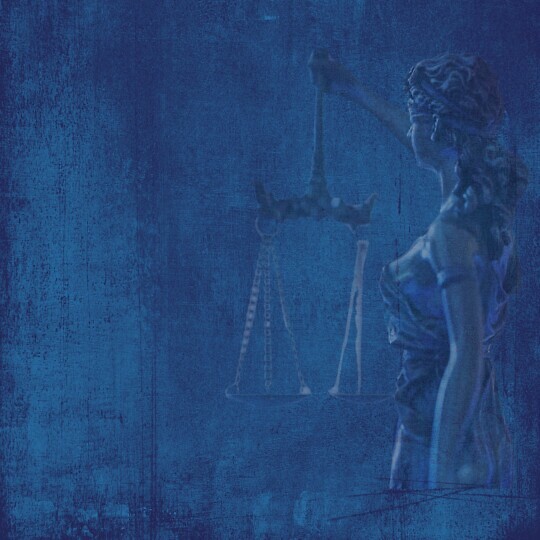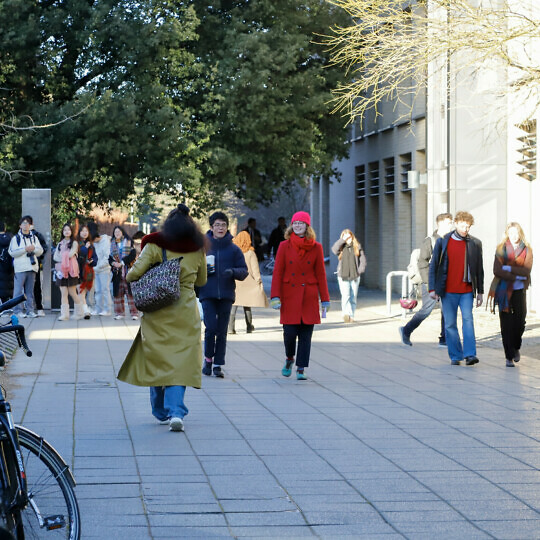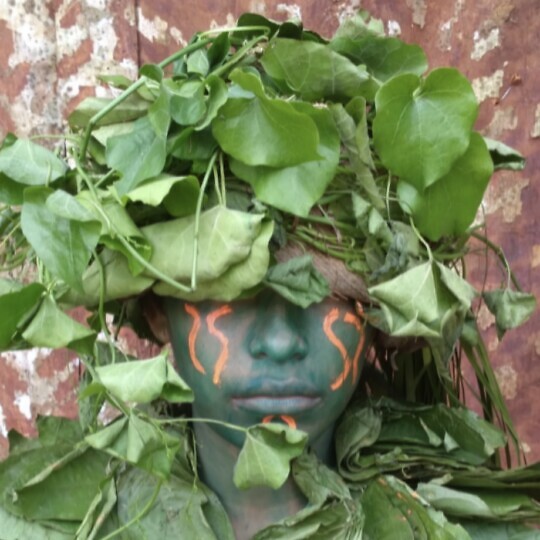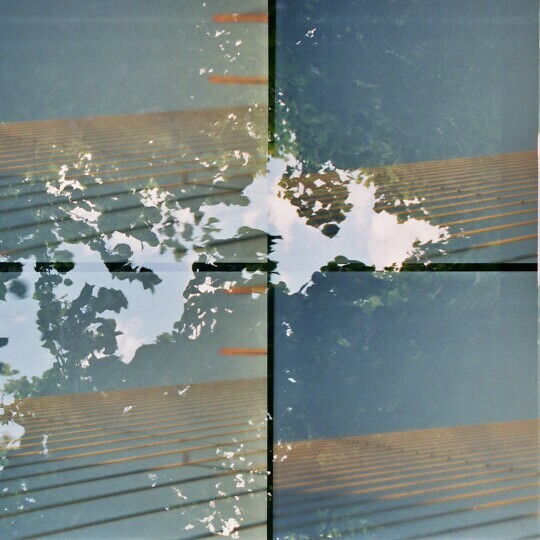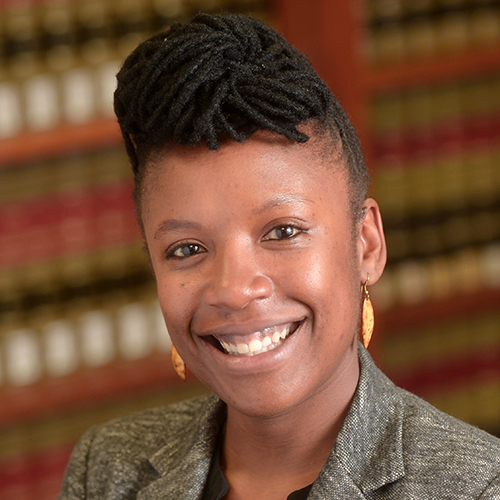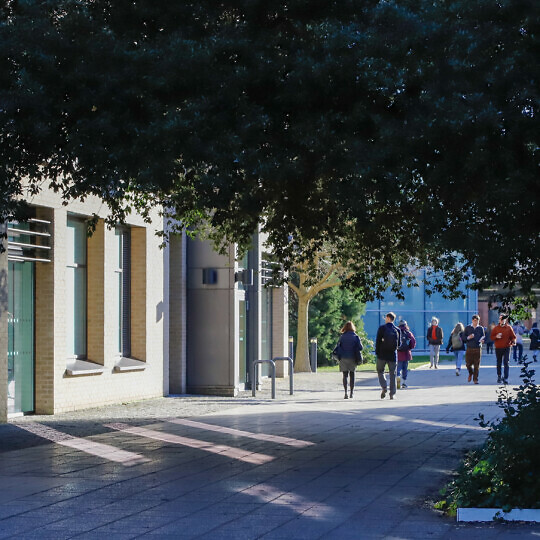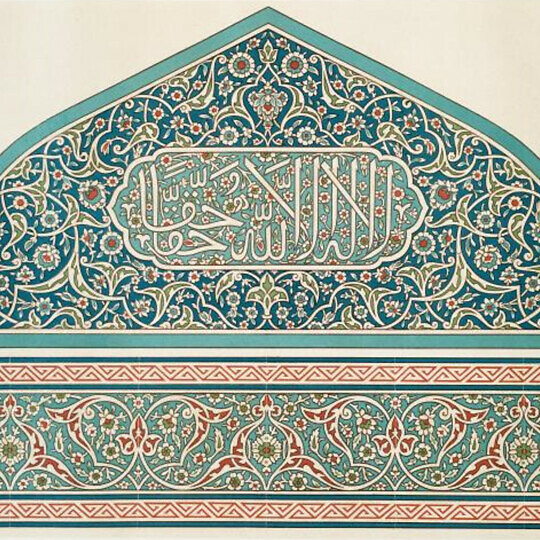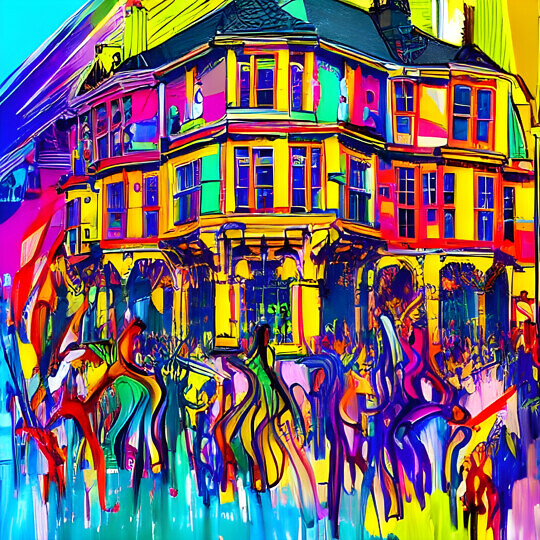| 23 Mar 2015 - 24 Mar 2015 | All day | CRASSH (SG1&2), Alison Richard Building, 7 West Road, CB3 9DT - SG1&2 | |
- Description
- Programme
- Abstracts
Description
Register online via the link at the top right hand side of this page
Conference fee: £25 (full), £5 (students) – includes lunch, tea/coffee
Deadline: Monday 16 March 2015
Twitter Hashtag: #critplaces
Conveners
Gavin Alexander (English, University of Cambridge)
Emma Gilby (French, University of Cambridge)
Alexander Marr (History of Art, University of Cambridge)
Summary
What is criticism? There is a telling irony in the fact that a word concerned with the making of clear separations and distinctions (< Greek krinein) should be used of early modern practices so various and so very often blurred in their disciplinary affiliation, method, aim, and indeed location. Thinking about literature and the visual arts is found in many places – in treatises on the arts of poetry or painting; in defences, apologies, praises, and paragoni; in critical prefaces, dedicatory epistles, commendatory verses, letters, and essays; in commentaries, editions, reading notes, and commonplace books; within or on the thresholds of works of poetry and painting (and in the on-stage audience of the play-within-a-play). It is situated between different disciplines and methods – borrowing structure, terminology, and taxonomy from rhetoric and logic, for example, or using the analogy of one art to think about another, as when Renaissance literary theorists build on a long tradition (it is there in Aristotle, and in Homer) of thinking about the visual arts in order to think about poetry, fiction, and mimēsis. Critical ideas and methods come into England from other places, most notably Italy, France, and the Low Countries, and take root in particular locations – the court, the Inns of Court, the theatre, the great house, the university hall, school, and library. And commonplaces of classical poetics and rhetoric – decorum, speaking pictures, nature and art, necessity and probability – serve both to connect and to measure the space between different critical discourses. Tracing the history of the development of early modern thinking about literature and the visual arts therefore requires that one think about various kinds of place – both material and textual – and the practices particular to those places; it also requires that those different places be brought into dialogue with each other. This is work that has yet to be done, and its lack accounts for the ongoing reluctance of many critics, literary historians, and art historians to engage fully with early modern thinking about the very materials they study. This conference will bring together scholars working in departments of English, modern languages, classics, and art history to look at the many different places of early modern criticism. It aims to initiate a dialogue involving scholars who are interested in the scope of criticism, and in looking at what happens on its margins; and who are keen to interrogate their own critical practices and disciplinary methods by investigating their history.
Sponsors
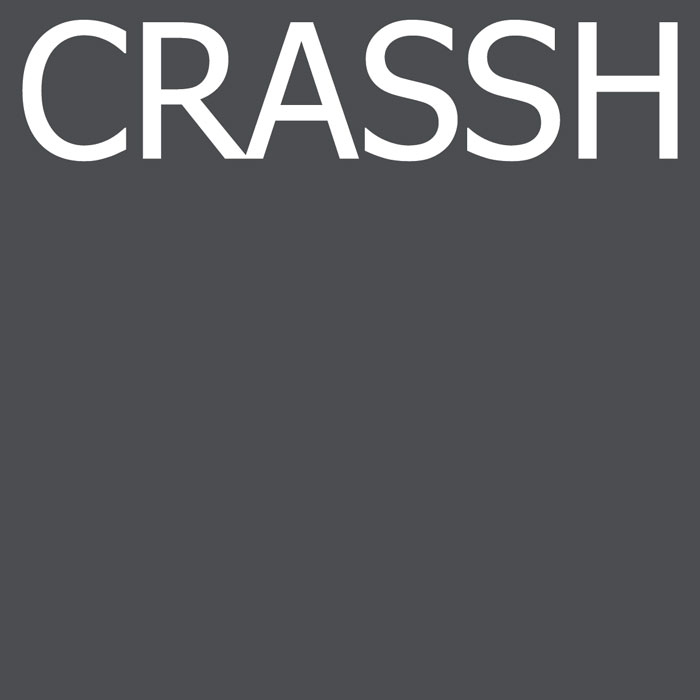
Supported by the Centre for Research in the Arts, Humanities and Social Sciences (CRASSH), the Faculty of English and the Faculty of History of Art at the University of Cambridge.
Accommodation for speakers selected through the call for papers and non-paper giving delegates
We are unable to arrange or book accommodation, however, the following websites may be of help.
Visit Cambridge
Cambridge Rooms
University of Cambridge accommodation webpage
Administrative assistance: events@crassh.cam.ac.uk
Programme
| DAY 1 - Monday 23 March | |
| 10.00–10.30 | Registration and Coffee |
| 10.30–10.45 | WELCOME |
| 10.45–12.45 | PANEL 1 – CRITICISM, DISCIPLINE, AND METHOD
Chair: Michael Moriarty (University of Cambridge) |
| 12.45–13.45 | Lunch |
| 13.45–15.05 | PANEL 2 – CRITICAL PLACES
Chair: Robin Kirkpatrick (University of Cambridge) |
| 15.05–15.30 | Tea |
| 15.30–16.50 | PANEL 3 – THE CRITICAL EYE
Chair: Rowan Tomlinson (University of Bristol) |
| 16.50–17.00 | Break |
| 17.00–18.15 | KEYNOTE
Chair: Subha Mukherji (University of Cambridge) |
| 18.15–19.00 | Wine reception |
| Day 2 - Tuesday 24 March | |
| 9.15–10.35 | PANEL 4 – CRITICAL TRAVELS
Chair: Emma Gilby (University of Cambridge) |
| 10.35–11.00 | Coffee |
| 11.00–13.00 | PANEL 5 – AESTHETIC PLACES
Chair: Tim Chesters (University of Cambridge) |
| 13.00–14.00 | Lunch |
| 14.00–15.30 | PANEL 6 – CRITICISM IN PRACTICE
Chair: Gavin Alexander (University of Cambridge) |
| 15.20–16.00 | Tea |
| 16.00–17.00 | ROUNDTABLE DISCUSSION |
Abstracts
PANEL 1 – CRITICISM, DISCIPLINE, AND METHOD
Michael Hetherington (University of Cambridge): ‘Conformatio animi’: the logic of matter and form in early modern poetics
In a sentence difficult to translate both accurately and eloquently, Julius Caesar Scaliger identified poetics as ‘scientia, id est habitus ex dispositione praeceptionum quibus docemur ad conformationem hanc quam poesin appellamus’ (a kind of knowledge, that is, a habit emerging from an arrangement of precepts by which we are taught, for the sake of that conformatio which we call poesis). What is conformatio? Scaliger earlier glossed poesis as ‘ratio ac forma poematis’ – the reason (or possibly method) and form of poems – and so implies that conformatio is something possessed by works of poetic art, a kind of created harmony, a conformity of parts within a larger whole sustained and structured by a governing rationality. But Scaliger’s definition also associates conformatio with teaching, suggesting a state of mind possessed by, and thus constituting, the poet; it bears some relation, not fully articulated, to the disposition of notions or precepts that stands behind the poet’s grasp of his own skill. Taking Scaliger as its starting point, this paper examines an important but often neglected premise that underlies much early modern poetics: in theory, formal works of poetics should be capable of teaching people to be poets – or to be better poets than they were before – by endowing them with a clear, well-structured and complete grasp of the art of poetry. Such works promise to create poets who are, in William Scott’s words, ‘disposed by nature, informed by art’. The paper will explore the processes of information and conformation posited by works of English and continental theory in the sixteenth century, and their implications for the different kinds of matter that receive this form – first, the poets themselves, then the words and ideas which they shape.
Kathryn Murphy (University of Oxford): ‘(I)t is a thing doth ill beseeme | The function of a Poem, to discourse’: Samuel Daniel, Fulke Greville, and the discursive function of poetry
In his ‘Epistle to Henery Reynolds Esquire’, Michael Drayton remarked of Samuel Daniel that ‘His rimes were smooth, his meeters well did close, | But yet his maner better fitted prose’. Daniel himself was aware of the possible charge: addressing himself to Fulke Greville in Musophilus, his defence of humane learning, Daniel acknowledged that the ‘curious sort’ might argue that ‘it is a thing doth ill beseeme | The function of a Poem, to discourse’. Sidney’s Defence, meanwhile, which distinguishes between philosophical and ‘right’ poets, casts doubt on the former’s claim to be considered poets at all.
As Drayton and Sidney’s comments suggest, philosophical and discursive poetry troubles early modern poetic criticism because it challenges definitions of what is poetic: whether poetry inheres in formal devices like rhyme and metre, or in fictiveness, or in delight; whether the statements of poetry can be understood as propositional or argumentative, or whether, as Sidney claimed, the poet ‘nothing affirms, and therefore never lieth’; what counts as form, and what matter, in the substance of a poem; what kind of truth the ‘heart-ravishing knowledge’ of poetry can deliver. Setting Daniel’s Musophilus and Greville’s treatise poems against the critical statements of J.C. Scaliger, Sidney, and William Scott raises these problems with particular piquancy, and shows how, in works which address the hierarchy of the arts and the rival claims of practical and theoretical knowledge, Daniel and especially Greville rearticulate the significance for verse of Aristotelian definitions of poesis, praxis, and what Sidney called ‘the mistress-knowledge, by the Greeks called architektonikē.’ This paper explores some of these confrontations, and what they have to tell us about the different formal and intellectual claims of prose and poetry in the period.
Nick Hardy (University of Cambridge): Critics in Paris
Isaac Casaubon (1559-1614) spent large parts of his career as a professor in Geneva, Montpellier and Paris planning to write a monograph On Criticism. This book, which was never published and probably not even fully drafted, would have been one of the most substantial Renaissance studies of the history of the learned practices which Casaubon deemed to be part of the ars critica. These included bibliography, palaeography and lexicography as well as the exegesis and emendation of texts, underpinned by polymathic knowledge of the extant literature of antiquity. Casaubon’s monograph would have superseded works such as his father-in-law Henri Estienne’s De criticis vet[eribus] Gr[aecis] et Latinis dissertatio (1587) or his colleague Johannes Wowerius of Hamburg’s De polymathia (1603), especially in its comparative coverage of the scholarship of ancient Jews and Christians alongside more familiar classical examples.
Why did he never finish it? To ask this question is to address the slipperiness of criticism in the Renaissance, and the abundant evidence concerning Casaubon’s career, especially during the ten-year period he spent in Paris under the patronage of King Henri IV, provides unusually clear and detailed answers. The study of literature was too diffused among the disciplines to produce a coherent art or science of its own, and too preoccupied with imitation and utility to regard the objective judgement or understanding of literary texts as its overriding purpose. These general circumstances can be traced to the material and institutional constraints of early modern academia, including differences in professorial salaries and prestige, pedagogical conventions, the challenges of a moribund learned book trade, and the confessional politics of the early modern universities.
I shall finish with some brief comments on the later seventeenth century, when scholars such as Jean Le Clerc, Richard Simon and Richard Bentley began to treat ‘criticism’ as a unified, autonomous enterprise. They did so in a context of academic expansion, religio-political uncertainty and philosophical revolution which neither Casaubon nor, perhaps, any Renaissance humanist could have anticipated or coped with.
PANEL 2 – CRITICAL PLACES
Colin Burrow (University of Oxford): The places of ‘epic’
In the first part of my talk I will piece together the early history of the word ‘epic’ in sixteenth and early seventeenth century English usage, where it coexisted with the much more frequently used ‘heroical’ as a generic and stylistic descriptor. My word-history is designed to show two things. One is incidental. I’ll show that the word ‘epic’ was surprisingly rare in this period and tended initially to be used by a very small circle of people, many of whom were associated with St John’s College, Cambridge, who prided themselves on being up to date in critical terminology. I will show how this word was adopted by a literary milieu by the later sixteenth and earlier seventeenth century and how it came to be used there by Scott, Drayton, Campion and Jonson. My main purpose in tracing those usages is to explain what kind of object of knowledge ‘epic’ was in this period, and in particular to show the extent to which the usage of this particular word intersected with thinking about the ‘genera dicendi’ in the rhetorical tradition. The final part of the talk will explore how that way of thinking about epic influenced Shakespeare despite the fact that he does not himself use the word. I will show how it influences word choice and register in Hamlet (where I will explore the influence on Shakespeare of Melanchthon’s commentary on Cicero’s De Oratore) and in Troilus and Cressida. I will finally suggest that ‘epic’ when transported from its association in the rhetorical tradition with a particular character of style to the stage becomes potentially a means of registering shifts in generic register through shifts in stylistic register, and of articulating what we have come to call ‘character’ by delicate modulations of style.
Elizabeth Scott-Baumann (KCL): The places of gender in early modern English literary criticism
“Unlike Shakespeare’s sister, Aristotle’s sister has yet to break her silence” Lawrence Lipking wrote some twenty five years ago and it remains curiously relevant today; there is no acknowledged tradition of classical or early modern women literary critics. Rich work by Patricia Parker and Lorna Hutson has explored such gendered ideas as stylistic virility, effeminacy, sexual deviancy and waywardness in classical and vernacular rhetoric. It remains unclear, though, what effect such gendered rhetoric had on the many women writers whose work has come to light in the intervening years, or indeed whether women writing critically engaged with debates on altogether different subjects than that of gender.
The places in which women wrote critically were often (in material terms) manuscripts, and (in generic terms) paratexts and letters. Inhabiting all three of these ‘places’, a manuscript now in the Folger Shakespeare Library entitled ‘The Workes of the Lady Anne Southwell’ has a letter containing a Sidneian defense of literature tipped in as a kind of preface. As scholars have shown, Southwell’s miscellany demonstrates her strategic, social and devotional use of literary texts. It also, this paper will argue, combines an explicitly theoretical defense of poetry (‘Poesye seemes to doe more for nature, then shee is able to doe for her selfe’) with explorations of this theory in her own poems. Southwell has a densely textual imagination: God’s power, mercy and wisdom are a ‘Comma, colon, & period’; His deeds and moods are ‘tropes’ and ‘figures’; the bounds of divine action are ‘as rules of poetrye’.
The places in which early modern women’s critical writings occur – texts which are apparently devotional and social, circulated but not published – often mean they have had little discernible influence, but this should not mask the ways in which women engaged with contemporary debates. While Southwell’s defense may be read as belatedly Sidneian, some critical principles often espoused by women, notably originality, anomalousness, and plainness, placed them at the vanguard of seventeenth-century literary culture, albeit serendipitously and perversely.
PANEL 3 – THE CRITICAL EYE
Thijs Weststeijn (University of Amsterdam): The ‘learned eye’ according to Franciscus Junius
Stijn Bussels (University of Leiden): A laudatory poem on the Amsterdam Town Hall and the ideal
spectator in the Dutch Golden Age
In 1655 the Town Hall of Amsterdam was inaugurated. The Heavenly Pastoral Play, by the aristocratic poet Everard Meyster, was one of many laudatory poems to celebrate this memorable event. In his verse drama, the Olympian gods discuss the magnificence of the new building with the most famous artists and art theoreticians of history, who have been summoned to rise from their graves. This contribution will concentrate on the dialogue between Jupiter and Michelangelo about the awe aroused by the decorations of the Vierschaar (Tribunal). Both characters are overwhelmed by sculptures depicting cruel executions and monstrous creatures.
In the dialogue Meyster ridicules Jupiter: the most powerful of all gods is totally deceived by the sculptures. Completely beside himself, he fears that he will be heartlessly attacked. Michelangelo, too, starts to believe in the living presence of the creatures. His reaction is strongly emotional, but at the same time he uses the careful distancing of ‘as if’ and ‘I believe’, thus preserving an element of self-control.
In his dialogue between Jupiter and Michelangelo, Meyster creates a schism between different ways of believing in the living presence of images, evaluating one as right and the other as wrong. Herein the poet is totally innovative. Meyster uses the dialogue to define the ideal spectator who is emotionally involved, but still possesses enough critical acumen to learn a lesson from the cruel executions and monstrous creatures portrayed. Only if self-control is combined with the belief in the living presence of the subjects sculpted can the sculptures enforce the severe and impressive ritual for which the Vierschaar was built: the proclamation of the death sentence.
KEYNOTE
Lorna Hutson (St Andrews): ‘Unseen, save to the eye of mind’: criticism and the ‘unscene’ of early modern theatre
In France and Italy the relationship between Renaissance neoclassical criticism and theatrical practice is well known; in England, however, the place of the stage and the place of criticism are felt to have been distinct. English dramatists, we are told, rejected the Aristotelian unities of time and place. This paper will argue, rather, that non-allegorical English drama shares with neoclassical criticism an interest in techniques for implying times, places and actions beyond those enacted onstage. Drawing on Quintilian, Erasmus, Ludovico Castelvetro, William Scott and others, and on a range of plays, it will show how a neoclassical critical discourse on evidentia and on the circumstantial topics of time, place, motive, etc. contributed to a more complex integration of diegetic or ‘unscene’ dimensions of dramatic action, enabling dramatists to imply passion, character, causality and, indeed, a wholly imaginary dramatic ‘world’ beyond the stage.
PANEL 4 – CRITICAL TRAVELS
Micha Lazarus (University of Cambridge): Byzantium, Venice, Cambridge, Edinburgh, Chicago: the peripatetic poetics
Sixteenth-century England has long been thought insulated from the influence of Aristotle’s Poetics. The earliest uses to which the Poetics was put seem to confirm this judgement, associating the Poetics with rhetorical and didactic goals, or quoting it selectively and offhand in support of such ‘un-Aristotelian’ topics as grammar.
Sir John Cheke’s citation, the earliest yet found in England, is among these. Yet Cheke’s use of the Poetics to support an academic point on Greek pronunciation has deep roots in a tradition that remained dominant from tenth-century Byzantium into the mid sixteenth century. New bibiographical evidence links Cheke’s Reformation Cambridge of 1542 to a moment of intense research into Greek pronunciation in Aldus’s Venetian printing studio in 1508. With the help of Cretan scholar-editors, themselves intimately involved with the project of bringing Greek to a Greekless western audience, Aldus printed the Poetics for the first time in the context of the Byzantine trivium. Even in this context, however, manuscript evidence suggests the Poetics was a heterodox text, brought to light by Aldus not just to witness the Byzantine syllabus, but as part of a comprehensive programme of linguistic reform.
This strain of influence gestures towards the diverse reception Poetics enjoyed in the first half of the sixteenth century. Yet its occlusion from modern histories follows the blind spots of their own readings of the Poetics, as instrumental as their sixteenth-century precursors’. The twentieth-century history of Renaissance criticism gestated to a surprising extent among communities of scholars with shared institutional investment in producing an anti-rhetorical Poetics. Attention to these situated interpretive communities might suggest a more diverse reception history of the Poetics than has readily been credited.
Rodrigo Cacho Casal (University of Cambridge): Writing in the New World: American poetics and the literary canon
This presentation will focus on the consolidation of early modern Spanish American poetics. This process took place over the turn of the sixteenth and seventeenth centuries when a series of seminal works appeared. The two most significant texts that will be considered are Bernardo de Balbuena’s Compendio apologético en alabanza de la poesía, published in Mexico City in 1604, and the anonymous Discurso en loor de la poesía, published in Seville in 1608, although conceived in Lima. The latter is included in the Parnaso antártico by Diego Mexía de Fernangil, who claims that the author is a ‘distinguished lady of this Kingdom [Peru], well versed in the Tuscan and Portuguese languages’. Both texts belong to the well-established rhetorical tradition of the defence of poetry, which goes back to the Middle Ages with the famous preface to Book XIV in Boccaccio’s Genealogia deorum (1360). But, whereas Boccaccio was defending poetry against ideological and moral attacks by Plato, Tertullian and St Augustine, Balbuena and the author of Discurso concentrate instead on the role of poetry in the New World. Alongside more conventional discussion on the virtues of poetry and its pedagogical value, Compendio and Discurso underscore the quality and quantity of the poetry produced in Mexico and Lima. In doing so, they also put forward a literary canon of American authors who complement and also challenge the traditional peninsular canon. This diversity is claimed using literary banners such as ‘The Western World’ or ‘The Antarctic Regions’, under which the Spanish American poets manifest their originality and their will to occupy a significant position within the Hispanic poetic canon. In Compendio and Discurso, the defence of poetry turns into a defence of a new literary identity: that of the poets of the New World.
PANEL 5 – AESTHETIC PLACES
Russ McDonald (Goldsmiths, University of London): ‘The squear right the cirkell wronge’: Elizabethan aesthetics
Non-literary disciplines furnish helpful ways of thinking about literary production in early modern England. If poetry is considered contextually, along with other Elizabethan arts and crafts, then the study of garden design, sartorial style, jewelry, dance, and other fields can disclose how the culture thought about writers and their work. The limited discourses and practical products of these disciplines attest to an increasingly visible cultural sensibility of which ‘poesy’, imaginative writing, is also a function. Architectural historians have demonstrated how humanist writers thought of architecture and rhetoric as cognate fields, and English architecture, an undeveloped area in the middle of the sixteenth century, constitutes an uncommonly fruitful discipline for defining the artistic inclinations of the Tudors generally. Scrutiny of its physical ‘texts’ and the discourse surrounding them reveals the primacy of the straight line, a feature that attains a growing dominance in the expanding visual culture. Most telling is the widespread devotion to rectilinearity, the deployment of the square or the rectangle in various arenas of creative production. As the century proceeds, with building developing a more or less distinctive style and other arts and crafts expanding, the line becomes more and more visible as the basis for structural composition—it is repeated regularly, worked into squares, rectangles, and symmetrical arrangements, preferred to other shapes. My hypothesis is that the prominence of the straight line in Elizabethan visual culture is related to and helps to account for the stabilization of the poetic line in the 1580s, specifically the poets’ fixing on the iambic pentameter line in rhymed lyric and narrative poems, e.g. sonnets and The Faerie Queene, and in the new blank verse of the public playhouse. Both the architectural and the poetic uses of linearity represent an effort at ordering the world and dividing experience into pleasing, memorable forms.
Sarah Howe (University of Cambridge): Speaking pictures: placing a commonplace
The ancient poet Simonides supplied the European Renaissance with a maxim—‘picture was a dumbe poesie, and poesie a speaking picture’ in Philemon Holland’s 1603 translation—that became a much-cited authority for the kinship between painting and poetry. Floating free of their context in Plutarch’s Moralia, these interlinked paradoxes provided Renaissance theorists with a framework for thinking about one art form by analogy with the other. My paper will trace some of the places where Simonides’ saying began to proliferate in English texts from the second half of the sixteenth century. Its appearances concentrated within certain genres, notably treatises of poetics and the emblem literature emerging in England at around the same time. What sort of commonality, if any, might we find in these discourses’ shared appropriation of the topos? What about its less obvious settings—when it turns up, say, during a religious controversy on the use of images in worship? Where might we expect to find it, but note its lack?
Philip Sidney was not the first to invoke the dictum in his Defence of Poesy (printed in 1595), but his theory of poetry’s ‘speaking pictures’ marks the period’s most thoughtful and influential use of the idea. Sidney took pains to ‘place’ this particular commonplace, reconnecting it with its source in two essays by Plutarch. Editors of the Defence have long recognised that Sidney’s treatise thinks substantially through ‘How the Young Man Should Study Poetry’, the Plutarchan essay usually cited as the origin of the ‘speaking picture’ topos. It is less often recalled that the phrase crops up again in another of the Moralia’s essays, ‘Were the Athenians more Famous in War or in Wisdom?’ I will argue this moment lies behind the ‘poor painter’ of Sidney’s Arcadia: recognising this overlooked intertextual dialogue sheds light on an episode that has often puzzled critics.
Alexander Marr (University of Cambridge): Pregnant wit: Lomazzo’s ingegno in England
It has long been established that Elizabethan and Jacobean writers had difficulty comprehending – and especially translating – the terms of Italian art criticism. Richard Haydocke’s translation of Lomazzo’s Trattato dell’arte de la pittura is often singled out as a potent example of such difficulties. Lucy Gent, for instance, noted pithily: “Where Lomazzo writes about arte disegnatrice, Haydocke is floored.” But while the English response to terms such as disegno and figura serpentinata has attracted considerable scholarly attention, one of the seminal concepts of Italian theory – ingegno – has been largely neglected. Taking Haydocke’s handling of Lomazzo’s text as a case study, this paper will explore the protean nature of ingegno in early modern England. We will see that the term’s semantic elasticity carried over into English, changing shape to denote variously ‘wit’, ‘inborn talent’, ‘subtlety’, ‘cunning’, ‘honesty’, ‘nobility’, and ‘freedom’. In particular, we will consider whether the notable slippage between ‘ingenious’ and ‘ingenuous’ speaks to a newly emerging understanding of the liberal standing of the artist and his craft.
PANEL 6 – CRITICISM IN PRACTICE
Chris Stamatakis (UCL): ‘The restful place’: criticism in early Tudor poetry
While early sixteenth-century Italy could boast a blossoming of formal poetic treatises written in the vernacular, the poetic culture of early Tudor England, by contrast, seems strangely, embarrassingly bereft of vernacular literary criticism. Some forty years would elapse before the first formal critical treatises, literary defences, and poetic manifestos began to appear in English. However, this paper suggests that a rudimentary, evolving critical vocabulary can be found in early Tudor English poetry itself, most obviously in the writings of Thomas Wyatt and Henry Howard, Earl of Surrey.
Much of this newly-emergent critical terminology gestures to a poem’s intertextual connections with other literature. In particular, several keywords—‘place’, ‘plot’, ‘record’—that are found in these poems seem to comment, self-reflexively, on this poetry itself and suggest a type of writing that is suffused with the residual, literary memory of earlier texts. Such terms hint at a critical framework, or paradigm, by which early Tudor writers and readers might trace a poem’s intertextual connections with prior texts.
Some evidence for the intertextual implications of this emergent critical vocabulary is offered by the appearance of equivalent terms in the early sixteenth-century Italian literary criticism with which Wyatt and Surrey are likely to have been familiar. Perhaps most important among these Italian critical forays is Alessandro Vellutello’s marginal commentary on Petrarch’s Canzoniere, since it was Vellutello’s annotated edition (1525) which Wyatt, for one, certainly studied closely, incorporating elements from Vellutello’s commentary in his own translations and imitations of Petrarch. The literary translations by Wyatt and Surrey reveal a debt to such Italian critical commentaries which afforded them a model for an intertextual mode of reading literature. As a place of criticism, the annotations, exegetical glosses, and comments in Vellutello’s marginal paratexts find a new home within the body of Wyatt’s and Surrey’s poems themselves.
Eric Méchoulan (Université de Montréal): Attention, reader at work!
In Being Singular Plural, Jean-Luc Nancy remarks: “philosophy is at odds with its ‘form,’ that is, with its ‘style,’ which is to say, finally, with its address. How does thinking address itself to itself (which also means: how does thinking address itself to everyone […])?” Nancy is indeed one of the few philosophers who tries to give to the question of the address an ontological status with his metaphysics founded on a “being-with.” But moreover the question of the address should be addressed with a political agenda in mind. It is a question of power and legitimacy: who may say the truth, and to whom? This is what Michel Foucault emphasized in his analysis of parrhesia (the courage of saying something true even to powerful people), but parrhesia is also the arrogant claim of speaking the truth.
Criticism oscillates between the potential aggressiveness of any critical remark and a constructive judgment, between arrogant attack and courageous understanding. Any person who gives one of his or her texts to the public is submitted to these possibilities. This is why authors pay so much attention to the material, social and intellectual ways of addressing the reading public. It is not only a matter of rhetoric (captatio benevolentiae), but also of a hermeneutics of medium and a history of truth.
I shall try to tackle these issues in elaborating a poetics of material engagements with readers. The examples will come from Aretino, Titian, and Holbein, in order to show what happens to criticism and spectatorship in the use of two mottos or proverbial sentences: Veritas filia temporis, and Veritas odium parit.

